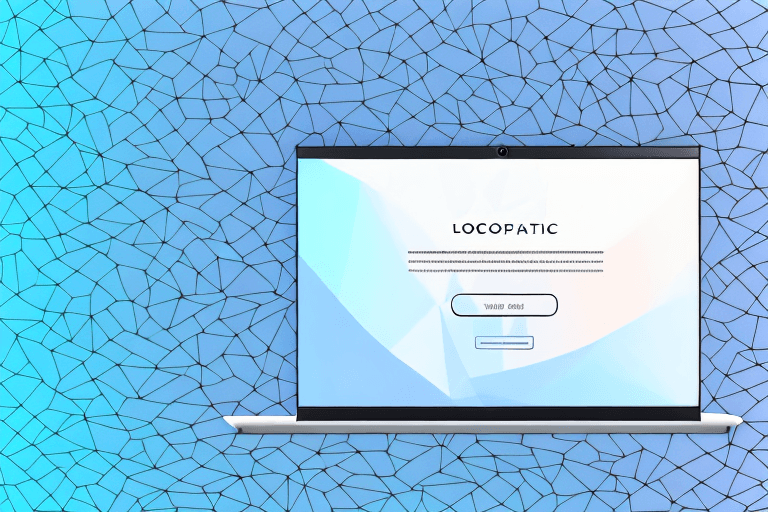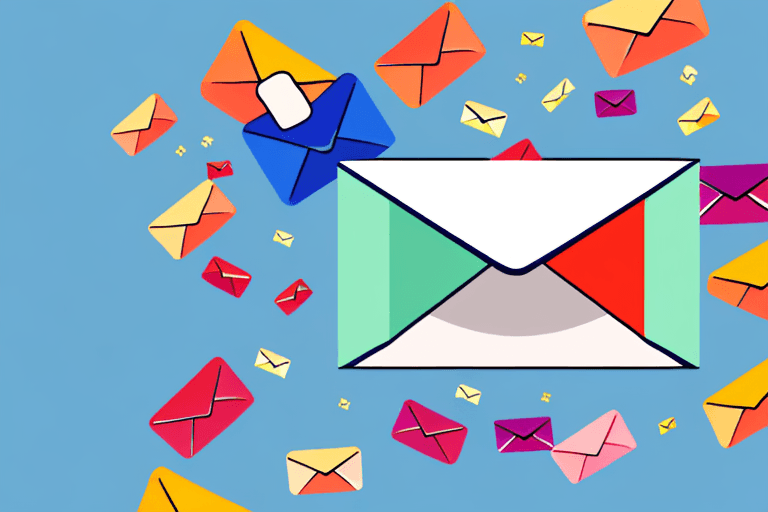If you work in sales, you know how important it is to have a solid email strategy. But coming up with the right message can be tough, especially when you're trying to stand out in a crowded inbox. That's where sales email templates come in. In this article, we'll explore the importance of sales email templates and share seven effective templates to help you close deals.
The Importance of Sales Email Templates
Sales email templates are an essential tool for any sales team. They offer a variety of benefits that can help improve your sales process and increase your chances of success.
One of the primary advantages of sales email templates is that they help you stay organized. By creating templates for different stages of the sales cycle, you can easily keep track of where each lead is in the process. This makes it easier to follow up with leads and ensures that no one falls through the cracks.
In addition to helping you stay organized, sales email templates can also improve your response rate. Templates give you a starting point for crafting messages that are compelling and relevant to your target audience. By using proven messaging and tactics, you can increase your chances of getting a response and ultimately closing the deal.
Another benefit of sales email templates is that they allow for personalization. While the basic structure of the email is pre-written, you can still add personal touches to make each message feel more customized. This can help you build stronger relationships with your leads and prospects.
Why Use Sales Email Templates?
There are several reasons why you should consider using sales email templates as part of your sales strategy. One of the most significant benefits is that they can save you time. Rather than spending hours crafting individual emails, you can use templates to streamline your process and send messages more efficiently.
Templates also increase consistency. They help ensure that your messaging stays on brand and on target for your target audience. This consistency can help build trust with your leads and prospects and make it easier to move them through the sales funnel.
Finally, sales email templates can improve your results. With pre-written templates, you can use proven messaging and tactics to increase your chances of getting a response. This can help you close more deals and achieve your sales goals.
Key Components of an Effective Sales Email
While sales email templates are a valuable tool, it's important to remember that not all templates are created equal. To be effective, your templates should include certain key components.
First and foremost, your subject line should be clear and compelling. It's the first thing your recipient will see, so it needs to grab their attention. Consider using personalization or urgency to make your subject line stand out.
Your opening should also be personalized and relevant. Use the recipient's name and reference any previous conversations or interactions you've had. This can help build rapport and make your message feel more personal.
In the body of your email, be sure to focus on value. Highlight what you can do for your recipient and how it will benefit them. Avoid being too salesy or pushy and instead focus on providing helpful information.
Your call-to-action should be clear and easy to follow. Whether you want the recipient to schedule a call or simply reply to your email, make it as simple as possible. Consider using a button or bold text to make your call-to-action stand out.
Finally, your closing should be polite and professional. Thank the recipient for their time and leave the door open for future conversations. This can help build goodwill and keep the lines of communication open.
By including these key components in your sales email templates, you can create messages that are more effective and more likely to generate a response.
Template 1: The Introduction Email
The introduction email can be used to establish a relationship with a new lead or prospect. Here are a few key elements to include:
Crafting a Strong Subject Line
Your subject line should be compelling and personalized. Use the recipient's name or mention a specific pain point you know they're experiencing. Here are a few examples:
- [Recipient Name], do you need help with [specific pain point]?
- Why [specific benefit] is essential for [recipient's industry or role]
- Introducing [your product or service]: the solution you've been looking for
Personalizing Your Introduction
In your opening, reference any previous interactions you've had or any mutual connections you share. Here's an example:
Hi [Recipient Name],
My colleague [Mutual Connection] recommended that I reach out to you. I noticed that your company [Recipient Company] is in [Industry] and I thought you might be interested in hearing about how our [Product/Service] can help you with [Specific Benefit].
It's important to note that personalization goes beyond just using the recipient's name. Take the time to research their company and industry to show that you have a genuine interest in helping them solve their pain points.
Establishing Credibility
Your body should highlight your expertise and success within your industry. Here's an example:
At [Your Company], we've been helping businesses like yours achieve [Specific Goal] for [Number] of years. Our [Product/Service] has been proven to [Specific Result].
Remember to keep your body focused on benefits, not just features. Explain how your offering can help the recipient achieve their goals. Additionally, including case studies or testimonials can further establish your credibility and demonstrate the value of your product or service.
Following Up
Don't forget to include a call-to-action in your email, such as scheduling a call or meeting. And if you don't receive a response, don't be afraid to follow up. Here's an example:
Hi [Recipient Name],
I wanted to follow up on my previous email to see if you had any questions or would like to schedule a call to discuss how our [Product/Service] can benefit [Recipient Company]. Let me know if you're interested!
Following up shows that you're persistent and genuinely interested in helping the recipient solve their pain points. It can also lead to a successful business relationship.
Template 2: The Follow-Up Email
The follow-up email can be used to re-engage a lead or prospect who hasn't responded to your initial message. It's a great way to remind them of your offering and demonstrate the value and benefits you can provide. Here are a few key elements to include:
Timing Your Follow-Up
Timing is everything when it comes to follow-up emails. You want to give the recipient enough time to respond to your initial message, but you don't want to wait too long and risk losing their interest. A week or two is usually a good timeframe to follow up. This gives them enough time to review your initial message and consider your offering, but it's not so long that they forget about you.
It's important to keep in mind that everyone's schedule is different, so your follow-up timing may need to be adjusted based on the recipient's availability. For example, if you know they're going to be out of the office for a week, you may want to wait until they return to follow up.
When crafting your follow-up email, consider starting with a friendly greeting and acknowledging the recipient's busy schedule. This can help build rapport and show that you respect their time.
Demonstrating Value and Benefits
Your follow-up email should remind the recipient of the benefits of your offering and provide additional information as needed. This is your chance to showcase your expertise and demonstrate how your product or service can help the recipient achieve their goals.
For example, you could highlight specific results that your offering has helped other companies achieve. Maybe your service has helped increase website traffic by 50%, or your product has helped streamline operations and save businesses thousands of dollars. Whatever the case may be, be sure to provide concrete examples of how your offering can help the recipient.
In addition to demonstrating value, it's important to address any questions or concerns the recipient may have. If you know they're considering other options, for example, you could provide a comparison chart that shows how your offering stacks up against the competition.
Encouraging a Response
Finally, your call-to-action should be clear and action-oriented. You want to make it as easy as possible for the recipient to take the next step, whether that's scheduling a call, requesting more information, or making a purchase.
One effective way to encourage a response is to offer a specific date and time for a call or meeting. This shows that you're proactive and committed to helping the recipient achieve their goals. Be sure to follow up with a reminder a day or two before the scheduled call to confirm the details and keep the conversation moving forward.
Remember, the key to a successful follow-up email is to be persistent without being pushy. Keep your tone friendly and professional, and focus on providing value and building a relationship with the recipient. With the right approach, you can turn a cold lead into a loyal customer.
Template 3: The Product/Service Showcase Email
The product/service showcase email can be used to provide more detailed information about your offering and encourage the recipient to take action. Here are a few key elements to include:
Highlighting Key Features
Your body should focus on the most important features of your offering and explain how they help the recipient achieve their goals. Here's an example:
Our [Product/Service] offers [Key Feature 1], [Key Feature 2], and [Key Feature 3]. These features are designed specifically to help [Recipient Company] achieve [Specific Goal], while also providing [Additional Benefit].
Sharing Success Stories and Testimonials
Social proof is an important part of the sales process. Use success stories and testimonials to show how your offering has helped other companies like the recipient's. Here's an example:
One of our clients, [Client Name], was struggling with [Specific Problem] before they started using our [Product/Service]. After implementing our solution, they were able to increase [Specific Result] by [Percentage or Amount]. Here's what their CEO had to say:
[Client Testimonial]
Offering a Special Promotion or Discount
Finally, consider offering a special promotion or discount to encourage the recipient to take action. Here's an example:
We're currently offering a [Percentage or Amount] discount to new customers who sign up by the end of the month. Would you be interested in taking advantage of this offer?
Conclusion
Using sales email templates can be a powerful way to streamline your sales process and improve your results. But remember, templates should be used as a starting point, not a crutch. Customize your messages as needed and be sure to keep your focus on the recipient's needs and goals. By doing so, you'll be well on your way to closing more deals and achieving greater success.




